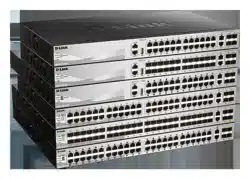Loading ...
Loading ...
Loading ...

DGS-3130 Series Layer 3 Stackable Managed Switch Web UI Reference Guide
55
Parameter Description
Network (IP/Mask) Enter the network IPv4 address and subnet mask for the DHCP client here.
Next Server Enter the next server IPv4 address here. The boot image file is stored on this
server and can be retrieved by DHCP clients using this IP address. The server
is typically a TFTP server. Only one next server IP address can be specified.
Default Router
Enter the IPv4 address of the default router for the DHCP client here. Up to 8
IPv4 address can be entered here. The IP address of the router should be on
the same subnet as the client’s subnet. Routers are listed in the order of
preference. If default routers are already configured, the default routers
configured later will be added to the default interface list.
DNS Server Enter the IPv4 address to be used by the DHCP client as the DNS server here.
Up to 8 IPv4 address can be entered here. Servers are listed in the order of
preference. If DNS servers are already configured, the DNS servers configured
later will be added to the DNS server list.
Netbios Name Server Enter the WINS name server IPv4 address for the DHCP client here. Up to 8
IPv4 address can be entered here. Servers are listed in the order of preference.
If name servers are already configured, the name server configured later will be
added to the default interface list.
Netbios Node Type Select the NetBIOS node type for Microsoft DHCP clients here. The node type
determines the method that NetBIOS uses to register and resolve names.
Options to choose from are Broadcast, Peer To Peer, Mixed, and Hybrid. A
Broadcast system uses broadcasts. A Peer To Peer (p-node) system uses
only point-to-point name queries to a name server (WINS). A Mixed (m-node)
system broadcasts first, and then queries the name server. A Hybrid (h-node)
system queries the name server first, and then broadcasts. The Hybrid type is
recommended.
Lease
Enter and select the lease time for an IPv4 address that is assigned from the
address pool here. Enter the Days in the range from 0 to 365. Select the Hours
and Minutes from the drop-down menus. Alternatively, the Infinite option can
be selected to specify that the lease time is unlimited.
Click the Apply button to accept the changes made.
Click the Back button to return to the previous window.
DHCP Server Exclude Address
This window is used to view and exclude a range of IPv4 addresses from being allocated to the DHCP client. The
DHCP server automatically allocates addresses in DHCP address pools to DHCP clients. All the addresses except the
interface’s IP address on the router and the excluded address (es) specified here are available for allocation. Multiple
ranges of addresses can be excluded. To remove a range of excluded addresses, administrators must specify the
exact range of addresses previously configured.
To view the following window, click Management > DHCP > DHCP Server > DHCP Server Exclude Address, as
shown below:
Figure 4-33 DHCP Server Exclude Address Window
Loading ...
Loading ...
Loading ...
